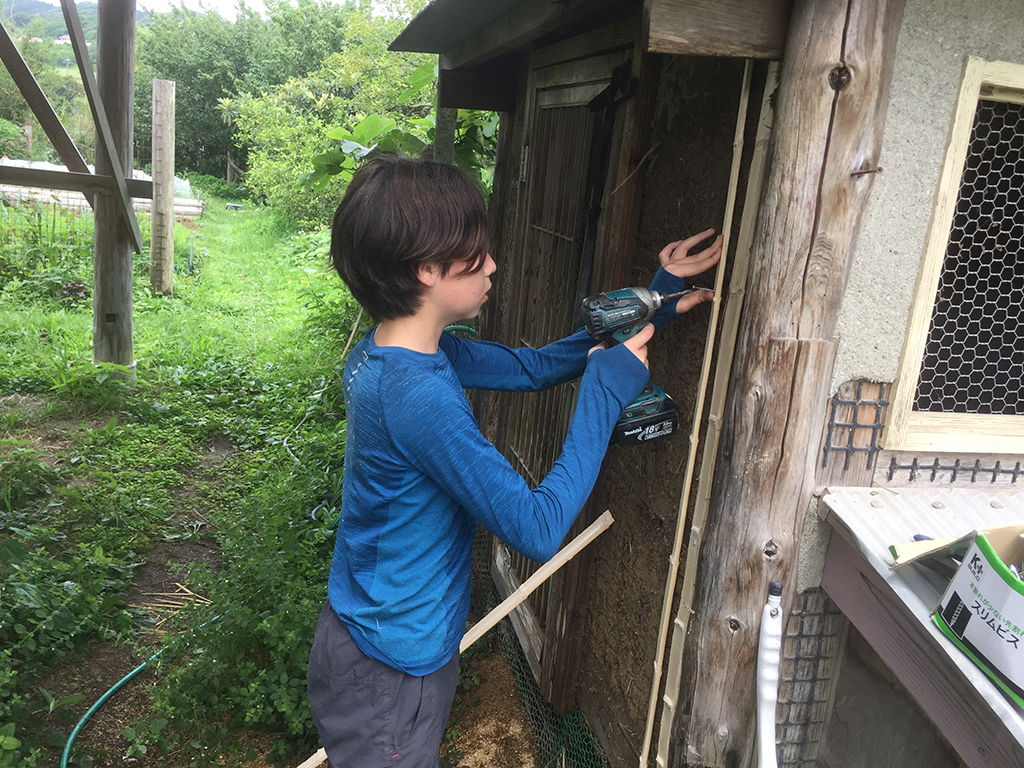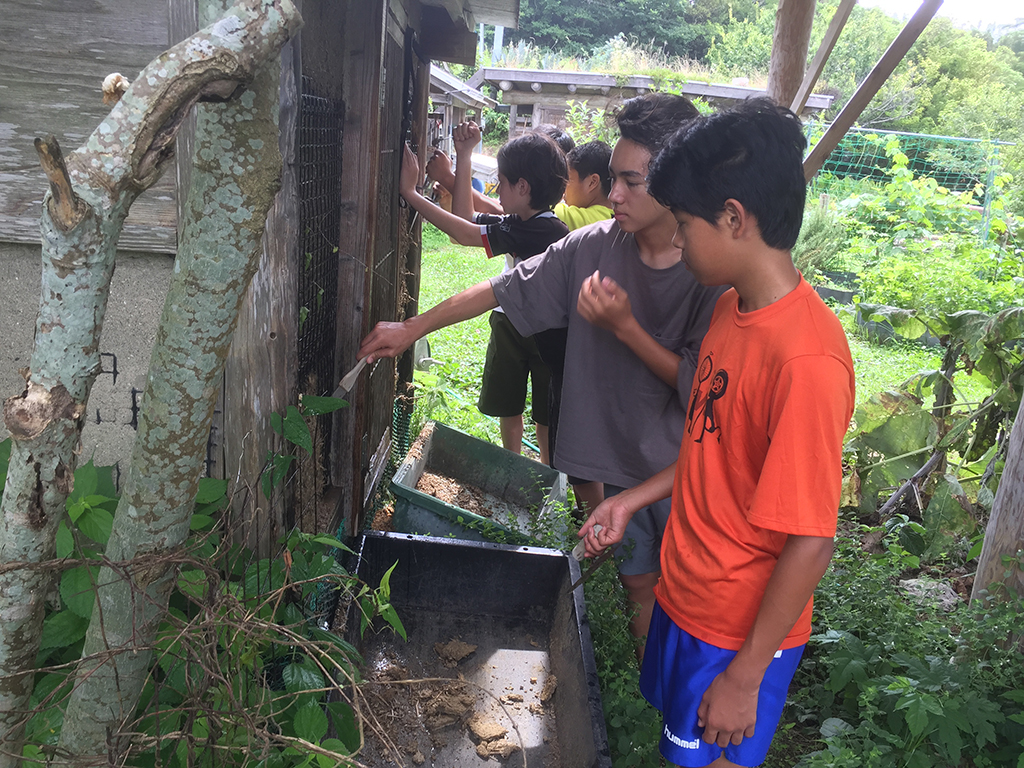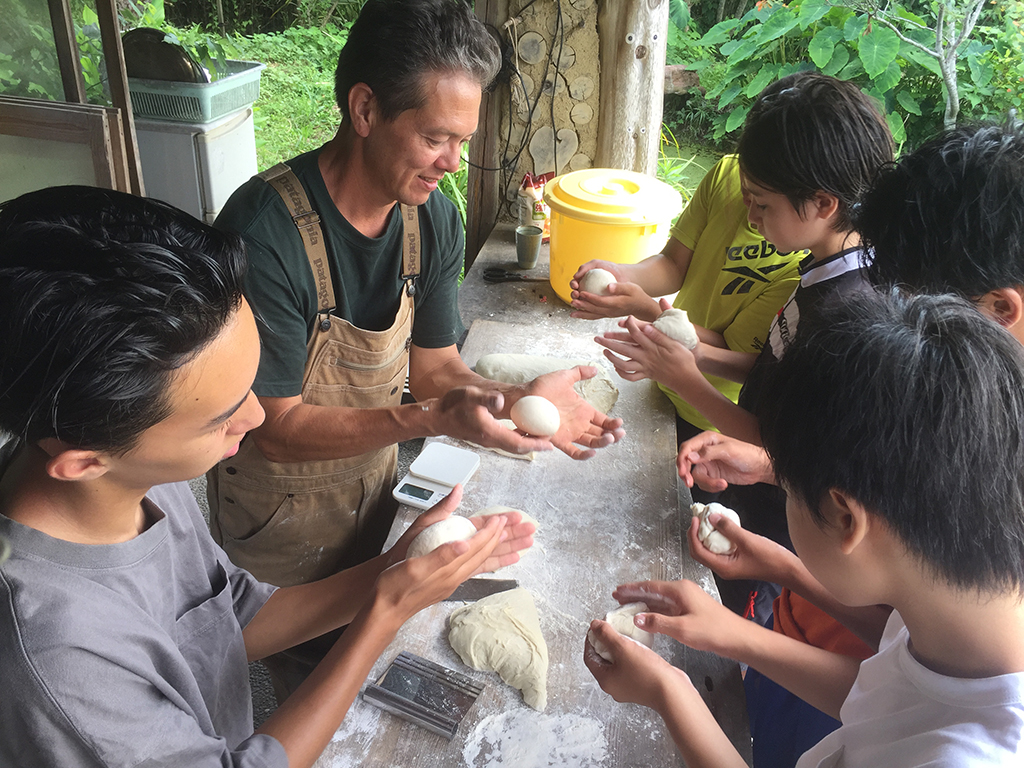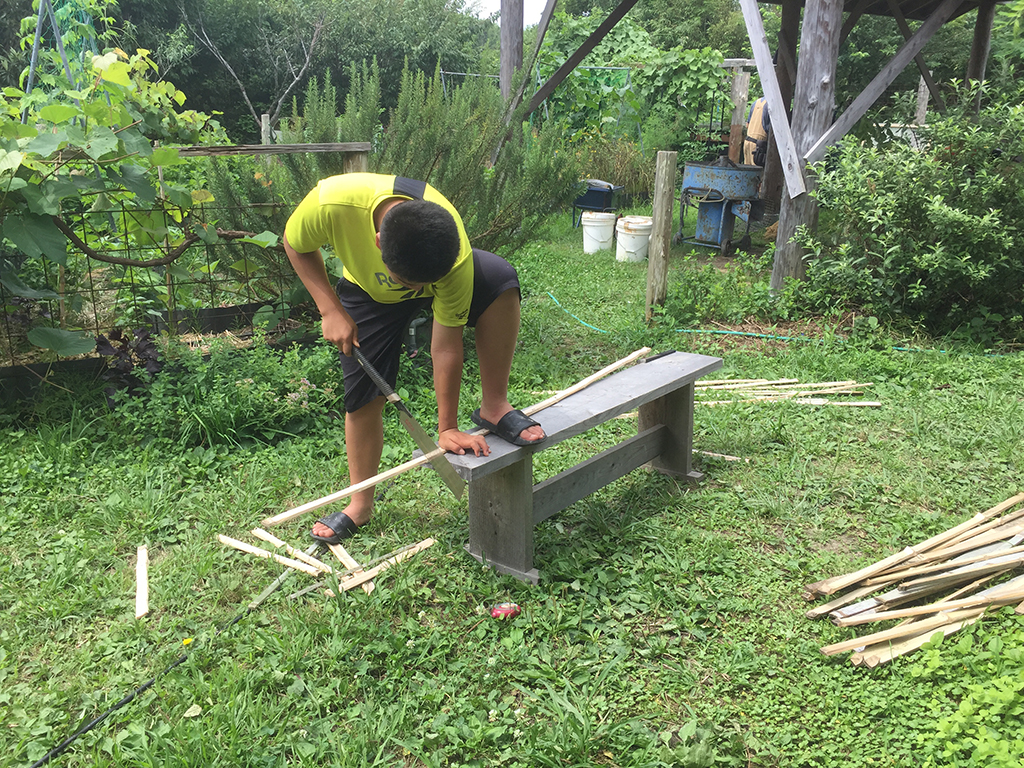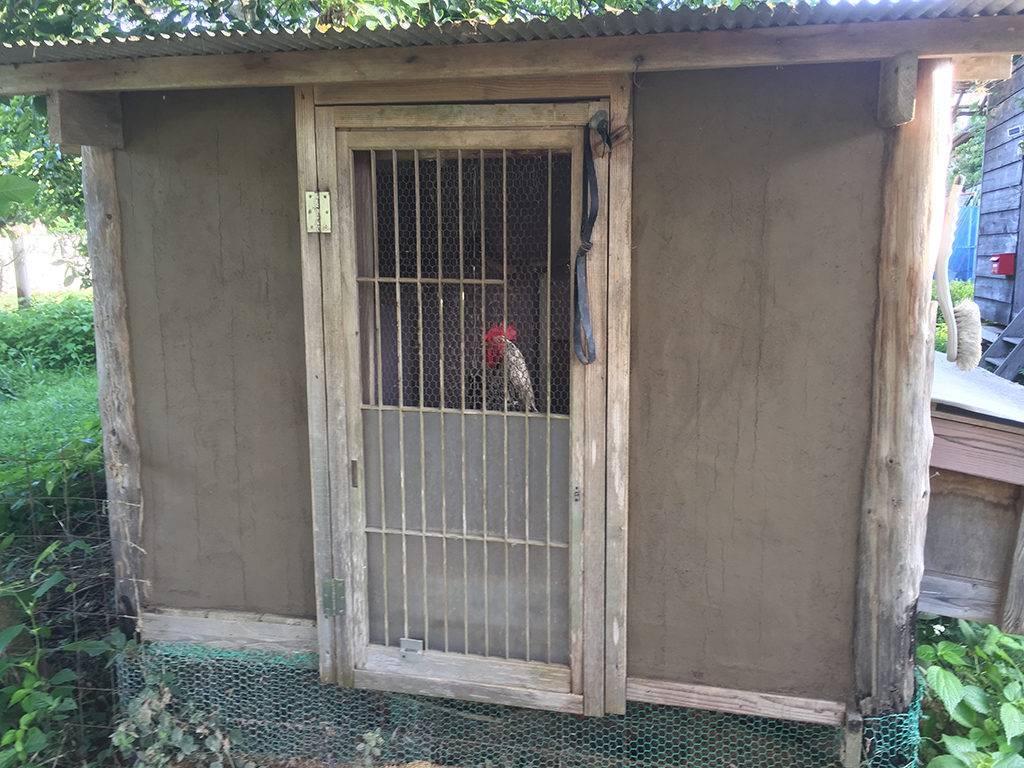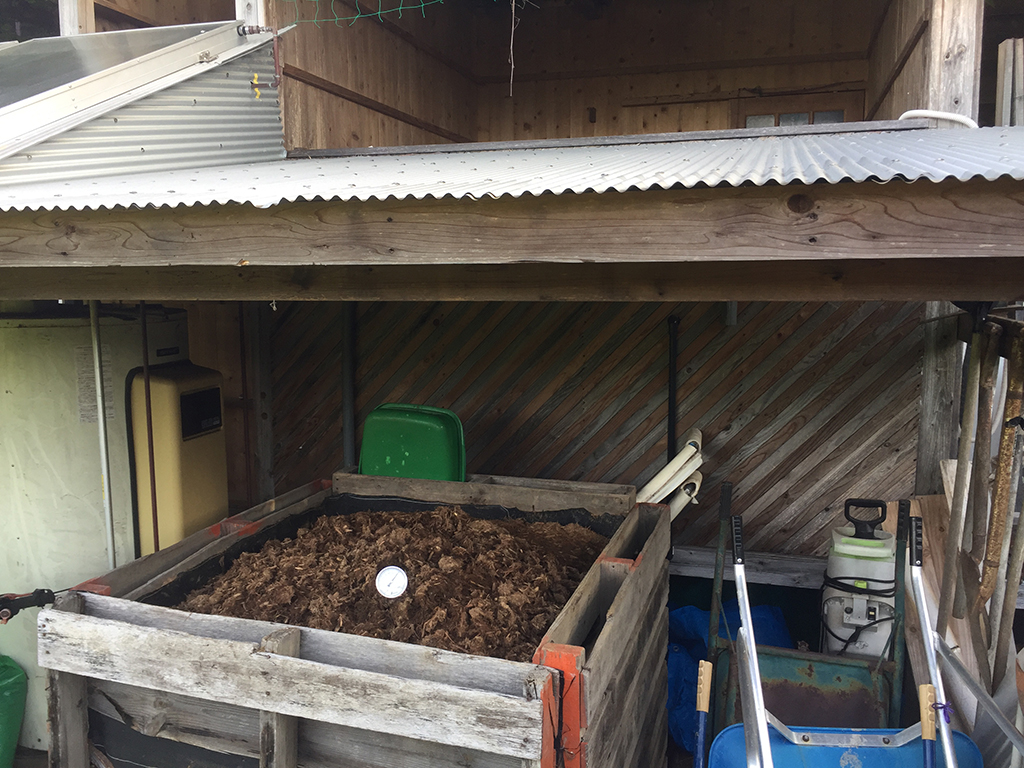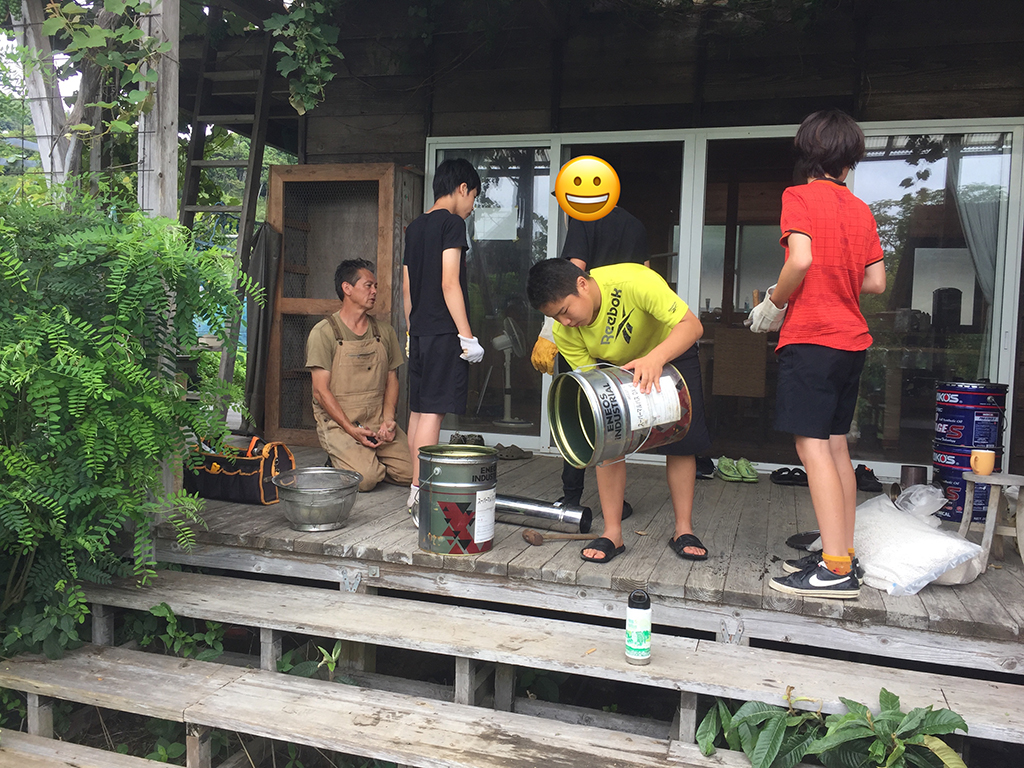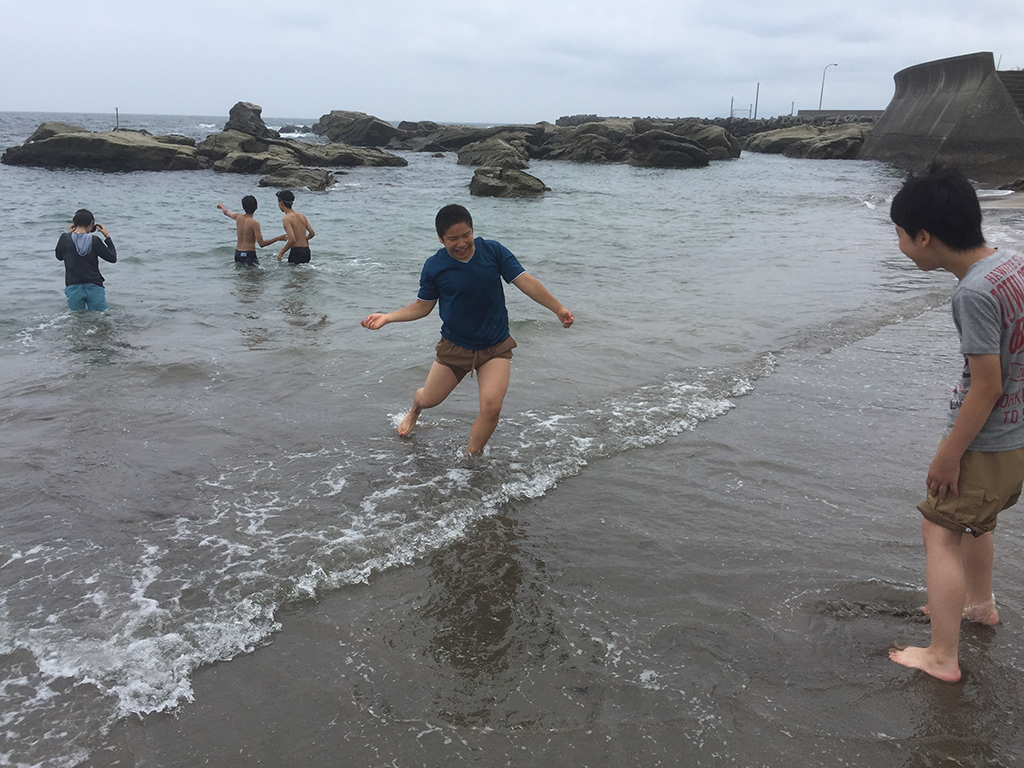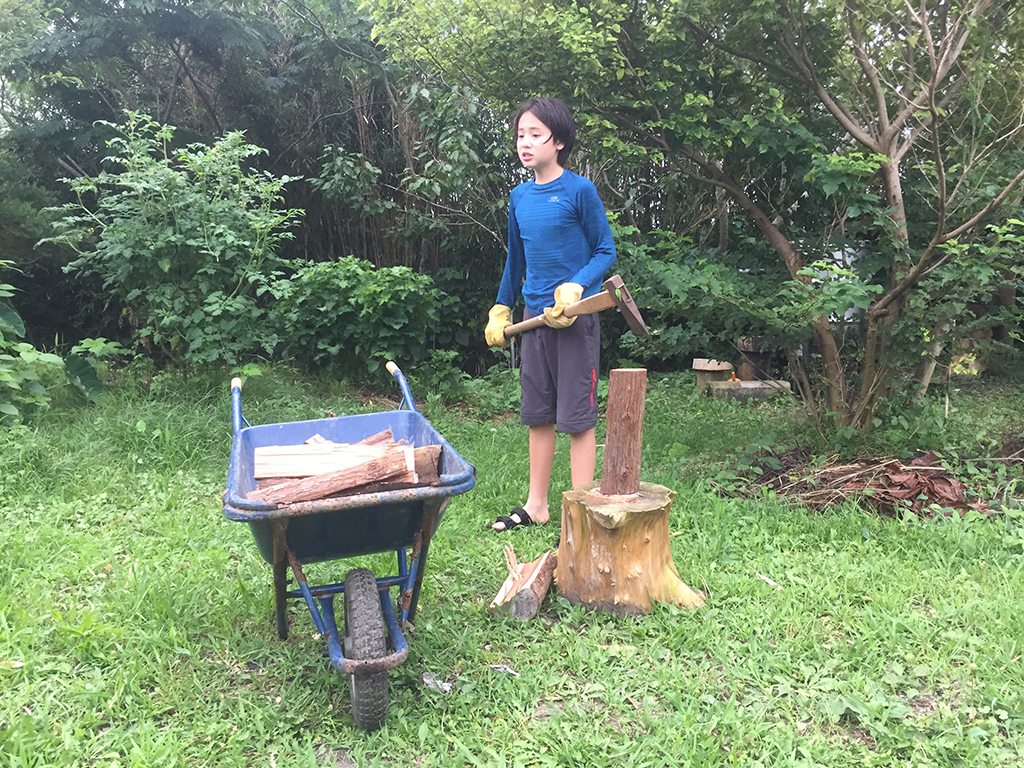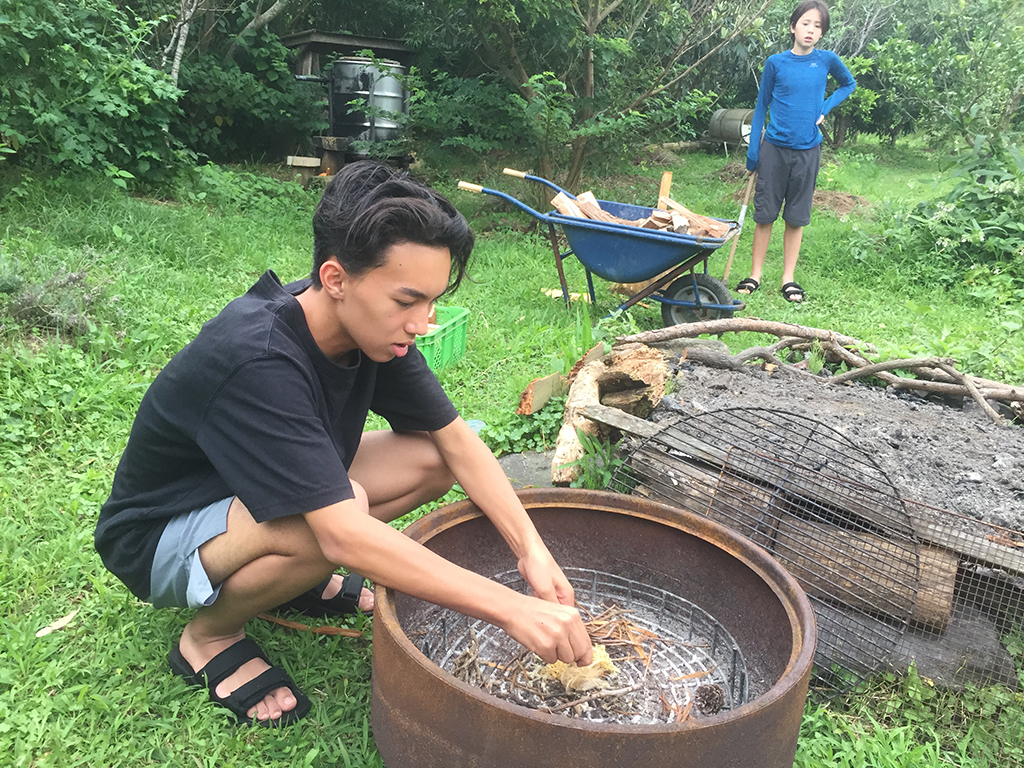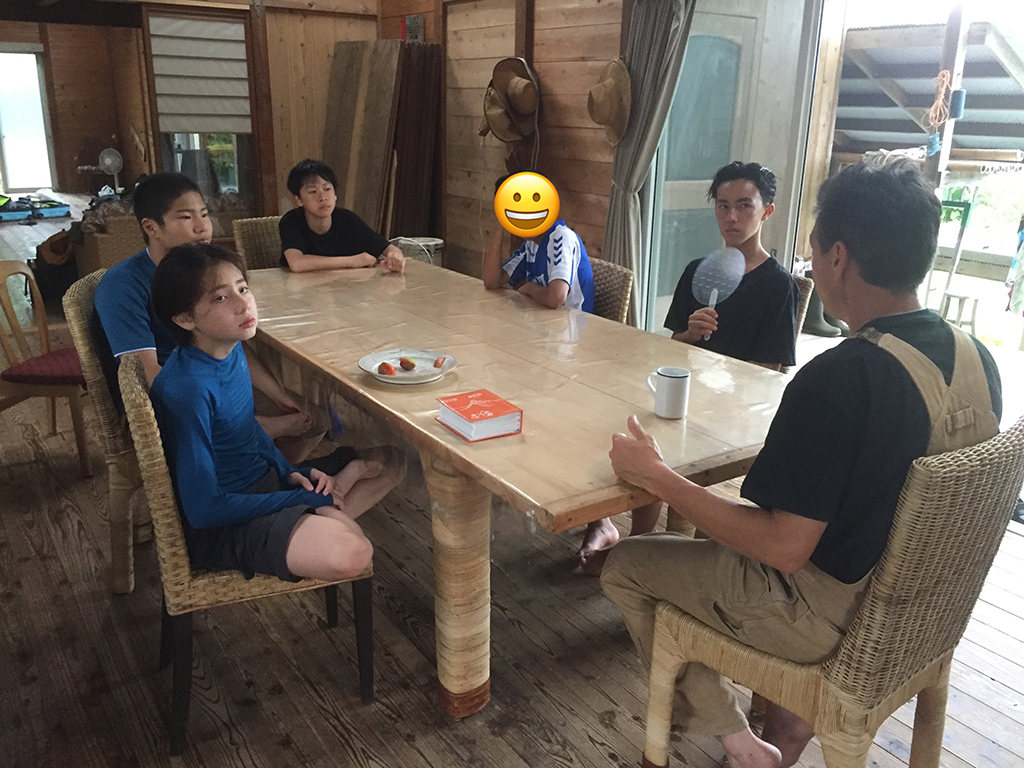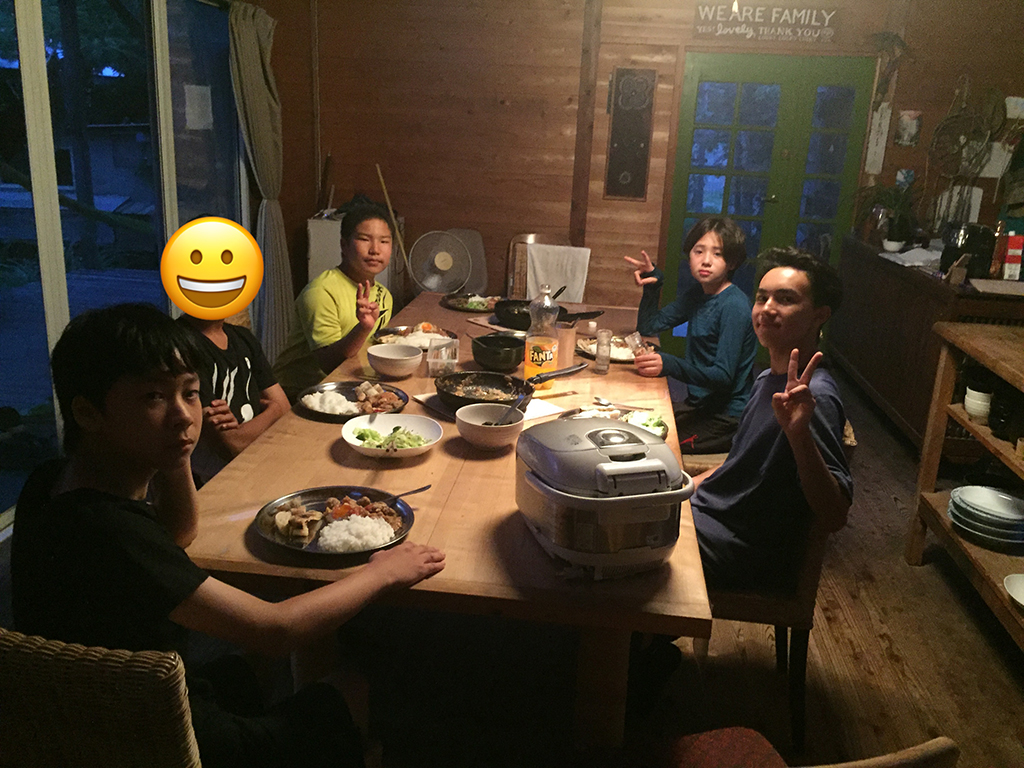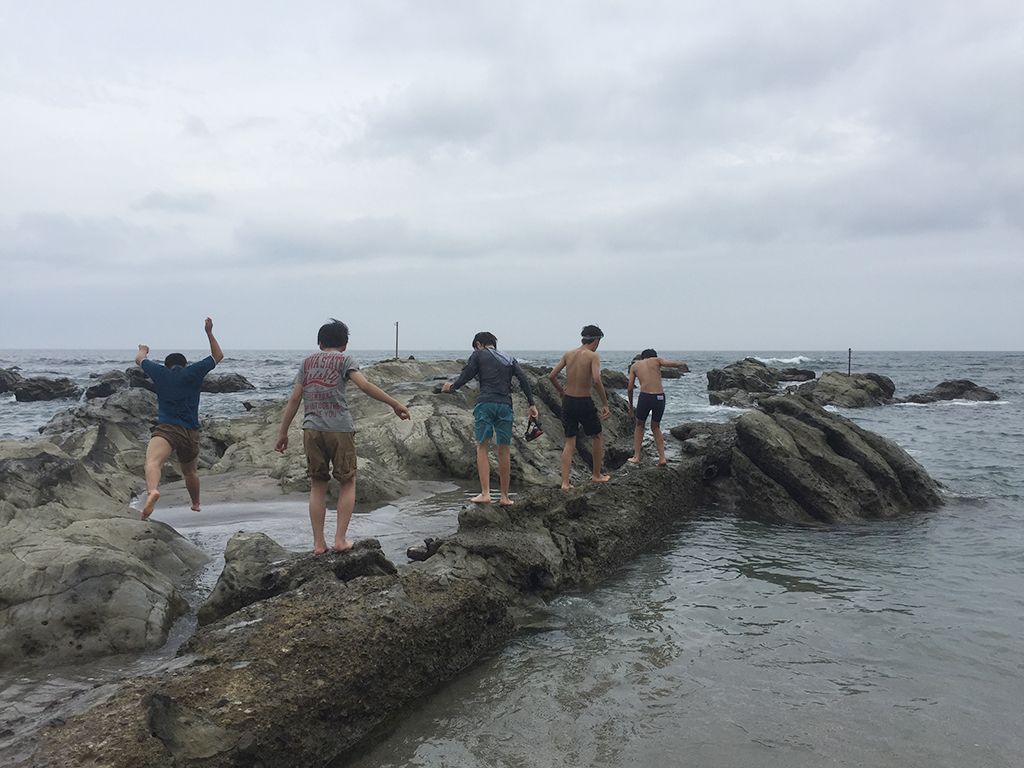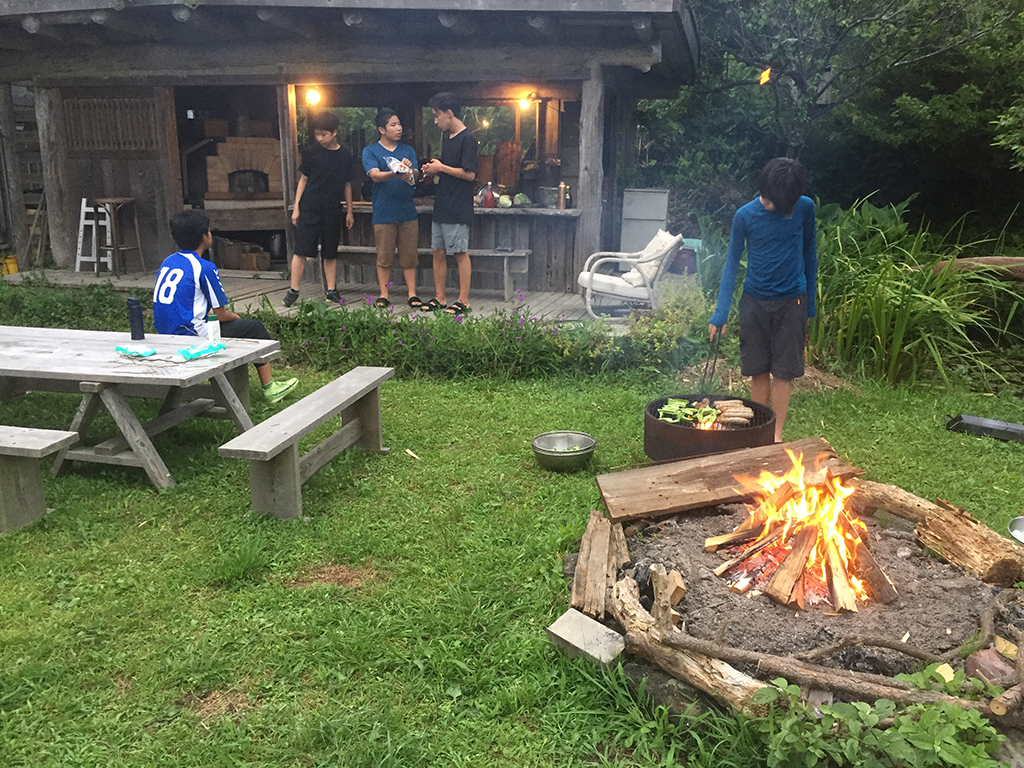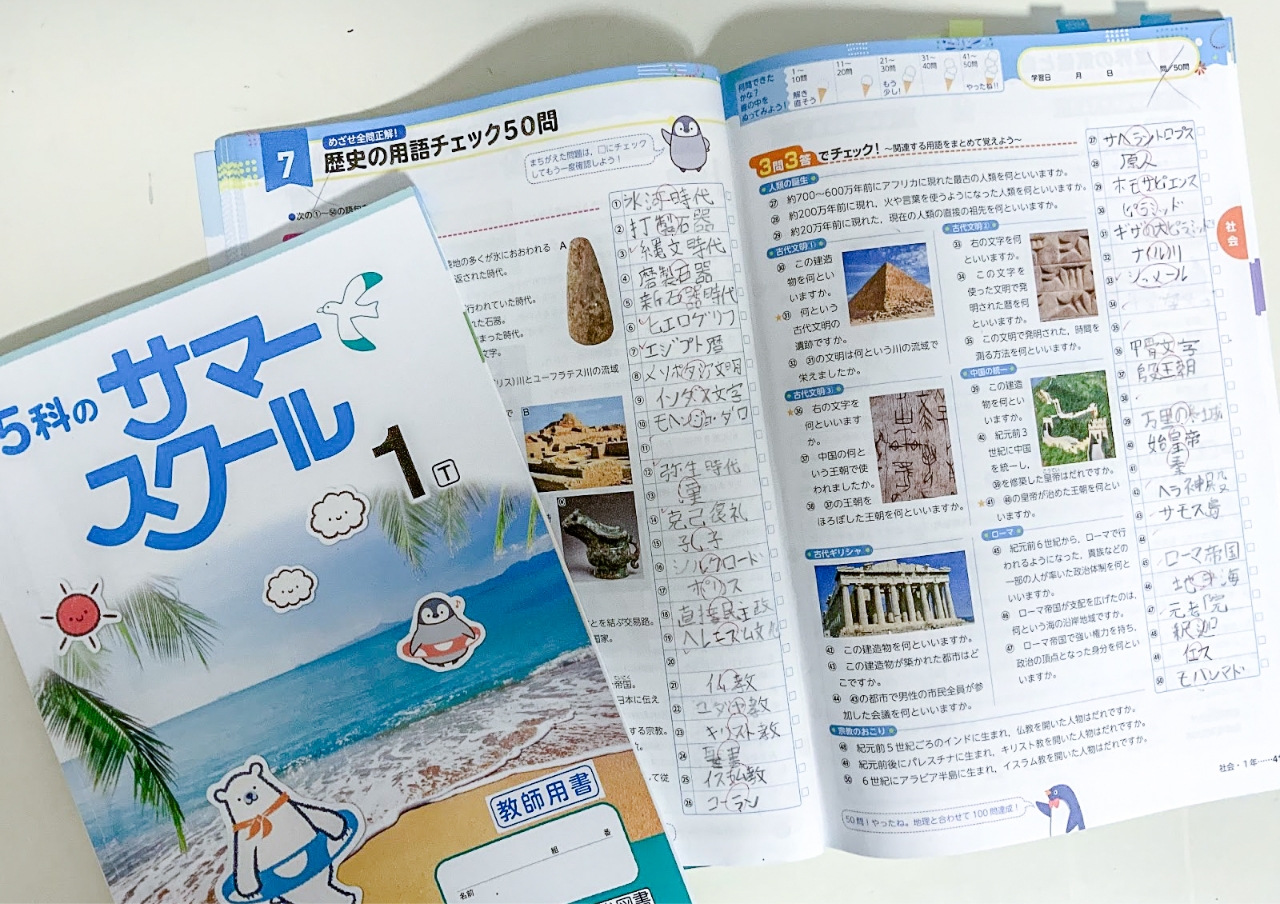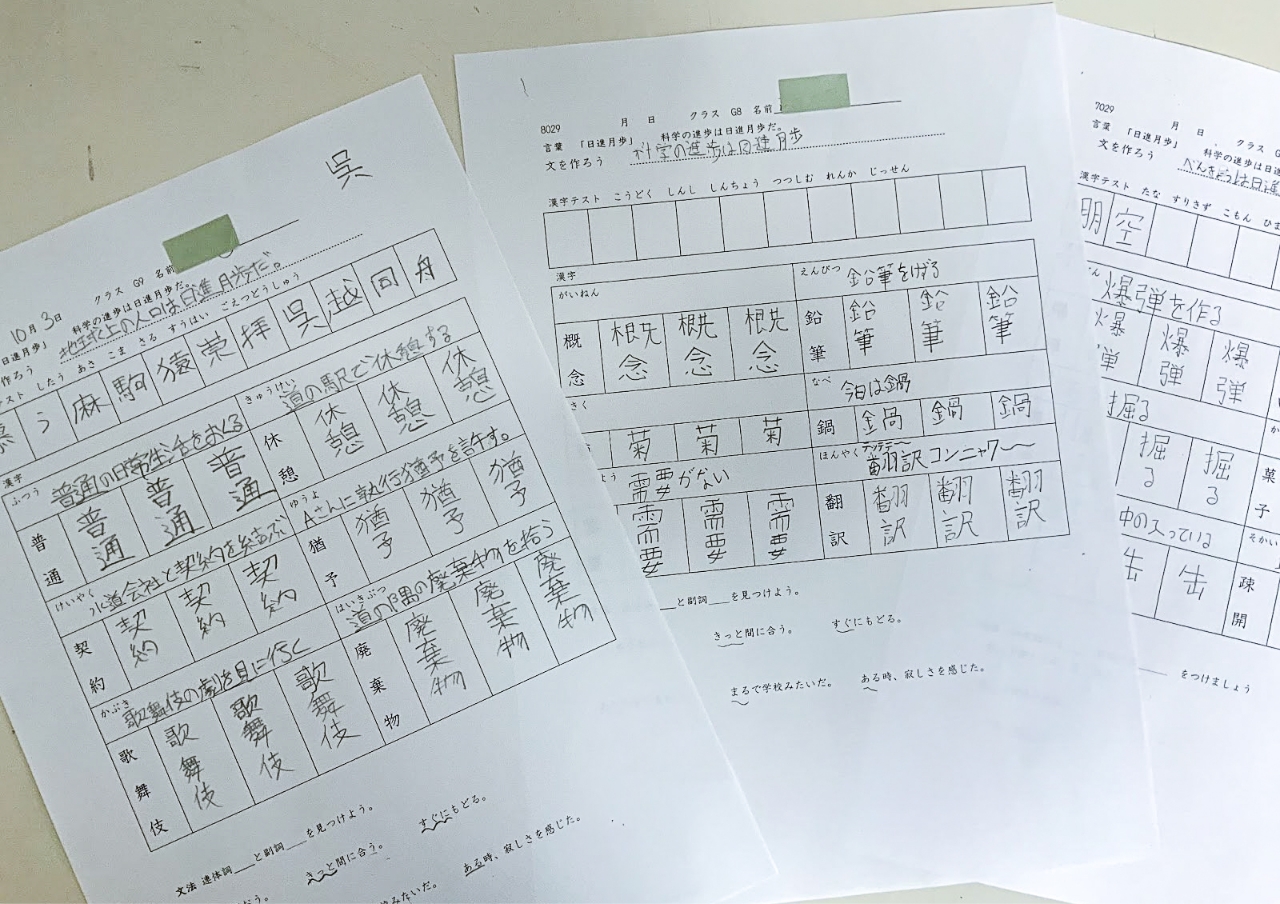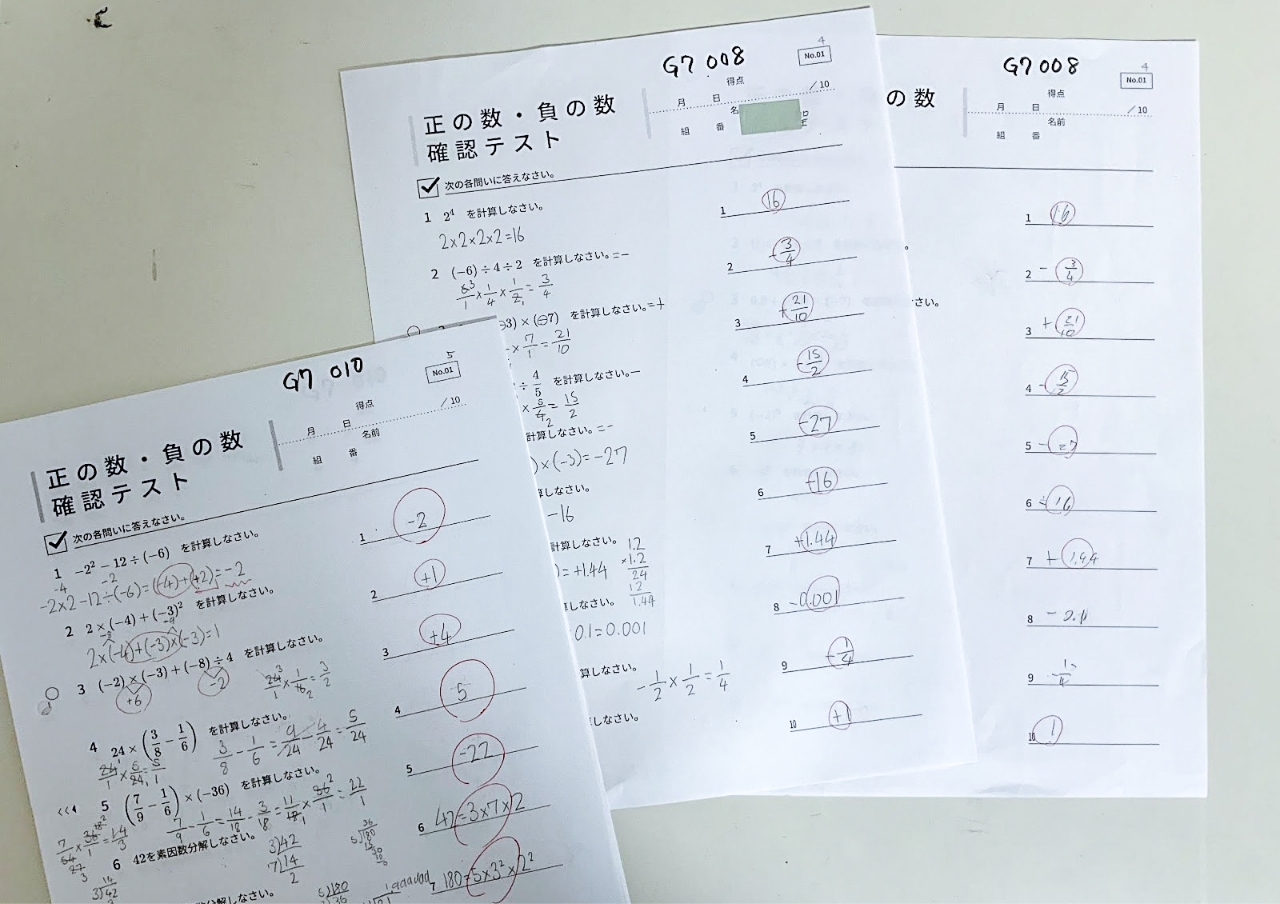The middle school years, which are a transitional period from childhood to adolescence, can be a time of emotional instability for students. During this phase, it’s common for them to experience fluctuating emotions and go through internal self-reflection. At ISN Middle School, we provide many opportunities for students to explore themselves, find their true selves, and express their emotions through voluntary activities.
Approximately 30% of our overall activities can be broadly categorized into Permaculture, Development Time, and Genius Time.
PERMACULTURE

For instance, when it comes to carbon, students have the opportunity to learn about where it can be found in nature, conduct scientific experiments, physically interact with it, and engage in various activities related to becoming more aware of carbon. As part of this year’s learning experience, we plan to construct a compost system within the school to help reduce carbon dioxide emissions resulting from food waste created by school lunch leftovers. This compost system will both retain and add valuable nutrients to our no-dig garden. Through hands-on involvement in creating compost and understanding its biology, students will learn about this cycle. This activity is carried out in collaboration with the elementary school.
To gain practical experience with permaculture and introduce it at the Gojo Campus, we engaged in a residential learning experience at PAWA Permaculture School in Chiba in July 2023. We experienced a variety of earth-friendly systems, i.e. compost to provide hot water for showering and bathing, no-dig food beds, a food forest and passive building heating, while also learning practical skills such as making rocket stoves, wattle and daub building and pizza making.
GENIUS TIME / DEVELOPMENT TIME
In Genius Time, students take the lead in selecting and working on projects in areas of their interest. For this academic year, for instance, one student is working on Tree Guilding. Tree Guilding is a planting technique used in forestry where different plant species are co-cultivated and thus support each other in a variety of beneficial ways, i.e. pest control, soil amending, attracting pollinators and retaining water. Additionally, other activities that students are engaged in during the Development Time this year include:
・Furniture Making
・Video Game Designing
・School Planting Program
In 2024, such activities in English will make up 30% of the middle school activities.



The remaining 70% of our program primarily focuses on academic learning, incorporating the Cambridge Lower Secondary and IGCSE curriculum, Eiken and the Japanese middle school curriculum. During this time, both English and Japanese are given dedicated hours.
We recognize that students have the option to attend either public schools or “English-focused” schools, whether in Japan or abroad. Our goal is to support students in achieving their current and future aspirations, ensuring that they excel in both Japanese and English tests. Unless there are special circumstances, we encourage students to keep local high school entrance exams in mind. Regular classes are conducted, and homework assignments are given to prepare students for these exams.
CAMBRIDGE LOWER SECONDARY & IGCSE
English instruction is primarily based on the Cambridge Lower Secondary and IGCSE textbooks. In subjects like mathematics and science, where there is substantial overlap with the curriculum requirements, the content is adjusted to allow students to learn concurrently in both languages.
While students may learn individual topics, the curriculum places a strong emphasis on reaching the fourth level of Solo Taxonomy, which is “Relational.” This means that students are expected to understand how what they’ve learned relates to and becomes relevant to various aspects of society, the natural environment, media, and more. Furthermore, the assessment evaluates to what extent students are capable of understanding and taking action at the fifth level, “Extended abstract.” The assessment also explores the significance of the learning experience for each student, how the fundamental objectives of learning have been achieved or not, and what it means to them personally.

Cambridge Lower Secondary and IGCSE encompass content that is not part of the standard Japanese curriculum. This additional content is primarily covered during dedicated English-only study hours. If students become particularly interested in certain topics, they can further explore them individually in the library, through self-study, or at home, even in Japanese.
As part of the Cambridge Lower Secondary and IGCSE programs, mock exams are planned to help students prepare for their assessments. These mock exams provide a valuable opportunity for students to practice and gain experience in the examination process.

Japanese Curriculum Guidelines
During the Japanese classes, students have regular tests for each unit. Over the course of three years, students gradually build the foundational skills needed for the local high school entrance exams they’ll take. At ISN’s MS, we work to build students’ confidence in their abilities at their own pace.
For parents, showing interest in and willingness to support their children’s learning at home, and actually providing that support, can have a positive impact. Especially when students are setting their own goals (such as future dreams, desired schools, target scores, and desired skills), creating a schedule (self-management skills – what needs to be done by when, in what order, etc.), and establishing a routine, parental support is very meaningful until the students develop a self-sustaining learning cycle. Here, support means doing it “together.” In the beginning, it’s not just about giving guidance but also sitting down together, creating a focused and relaxed atmosphere, and having time to talk. It’s important for parents to set aside time to engage with their children, where they can give their full attention without any distractions from work or other obligations. If it’s not possible to do this every day, then aim for at least once a week to spend quality time together and have meaningful conversations. Balancing rest and physical activity is also essential!
ISN’s middle school students receive highly customized support from their first year. Rather than immediately writing essays, we start by helping students organize their thoughts and practice essay writing when their ideas are clear.
Music
This year’s middle school music program focuses on the idea that each student learns their role thoroughly, takes responsibility for playing their instrument, and creates beautiful harmony by resonating with others. The activities emphasize learning to listen to the surrounding sounds, harmonizing different tones, and working together towards a common purpose, much like a team within an organization. The goal is to foster teamwork, individual critical thinking, effort, active social interaction, and a sense of collective responsibility.
Students are also encouraged to choose the pieces of music they want to perform, even if they are challenging, and to use their personalities and individuality to contribute to the group’s overall performance. In this way, they take ownership of the process while the instructor provides support.

Regarding guitar instruction, the focus is primarily on teaching chords using chord charts. The foundational skills are taught during music class, and then chord charts are provided for self-practice either at home or at school.
During music class, students are guided on the aspects they may have difficulties with their respective instruments and the rest of the learning is done by practicing individually at school or home. In particular, piano and keyboard instruction involves challenging elements and is conducted by students with experience. Drumming not only involves reading sheet music but also encourages creative thinking and expression, making it suitable for students with strong critical thinking skills (drumming is taught in all elementary grades as well). For xylophones and metallophones, students who can adapt and coordinate well with others tend to perform more smoothly.
Each student selects their instrument based on what they want to play, and the choices are made based on their individual preferences. This naturally led to a format that suited each instructor’s expertise. Ensemble music, especially playing together in a group, is focused on individual understanding of their chosen instruments, personal practice efforts, and how to collaborate with their classmates. The aim is to achieve both personal growth and harmony within the class. The quality of the “beautiful harmony” they create and how well they harmonize with each other demonstrate the students’ progress.
While there are fewer students compared to the elementary school, each student’s role is more significant, which is why a band format was adopted in the music class for MS program.
Case Study ~What’s after ISN Middle School Program?~
For the 3rd-year middle school students, discussions about their future educational paths started around June. While considering overseas schools as an option, the approach has been to allow students to conduct their research at their own pace into places they genuinely want to go. Upon sharing the information they gathered, it was surprising to discover that boarding school costs range from a minimum of 5 million yen to 9 million yen. Further research revealed that in native English-speaking countries, such expenses are standard.
A coincidental find was a state-run boarding school, which became the top choice considering the budget. In Japan, there are about four international schools offering boarding school programs, with costs averaging around 6 million yen. For boarding schools abroad, it’s usually required that parents accompany the student or, if not, additional expenses may include contracting guardian services (representing parents in their absence). These costs, in addition to tuition and boarding fees, can add up significantly.



In a world where a large population can communicate in English, regardless of one’s chosen profession or dream, a valuable skill to differentiate oneself is the ability to use highly specialized English. The ability to delve into backgrounds and related phenomena in fields such as psychology, political science, and design, and learn, experience, and express these concepts in a native-level English environment, sets individuals apart from those who can merely speak English. It makes them not only unique within Japan but also internationally. With this goal in mind, experiencing the influence of native English is a significant attraction for the specific student, more so than attending an international school where students from various countries gather. This is to refine the student’s skills and abilities, as well as to support other capabilities and skills during their high school journey.
On the other hand, for quite some time, the decision was made to take the local public high school entrance exams, as a “test of one’s abilities and knowledge.” The knowledge and understanding of subjects like mathematics and science in Japanese that the students acquire to achieve what they want is never a disadvantage. Instead, learning to comprehend them in two languages often provides various advantages. Furthermore, taking the high school entrance exams can be a one-of-a-kind experience. It is an opportunity to say, “I worked hard and did my best,” and later, when choosing a different path, to avoid potential regret about not attempting the high school entrance exams in Japan. It’s an experience that shouldn’t go to waste.
The teacher responsible for the curriculum guidelines at ISN Middle School also enjoys tutoring students in high school entrance exam subjects. She handles Japanese language, social studies, mathematics, and science. She regularly meets with students every few weeks, either in person or via Zoom, to check on their progress. They listen to their students’ feedback and adjust homework assignments accordingly based on how the students are doing.
Opening Hours
7:30 am – 5:00 pm
Pick-up and Drop-off
Between 7:30 and 8:30
16:00 to 17:30
Pick up for students not participating in the evening program is between 3:45 pm and 4:00 pm.
A school bus is available in the morning and evening. For bus schedules and boarding locations, please contact the Gojo Campus.
Others
There are no long vacations such as summer vacation. Please contact us for a detailed schedule.
For your child’s safety, please contact the school in advance.
FAQ
After graduating from middle school, there are various options, such as:
・Enrolling in a local public high school.
・Attending a private and/or international school.
・Pursuing education at an overseas school.
These are some of the potential paths that students can choose for their educational journey after middle school.
The enrollment process varies depending on the desired school. Here is a general overview of the application process for different types of schools:
For enrollment in a Japanese local public high school:
・In the case of G9 (Grade 9 or 3rd-year middle school) students, applications are typically submitted in February, with acceptance announcements in March. Some high schools may offer a pre-application or self-recommendation period starting around November.
For enrollment in private and/or international schools:
・For each of these schools, it’s essential to confirm the application process about a year in advance. The specific requirements and deadlines can vary, so researching the schools of interest and gathering the necessary documents is crucial.
For enrollment in overseas schools:
・Many overseas schools have a start date in September. If you wish to start in September of the year following ISN graduation, you should begin considering your options in the spring of G9 (3rd year of middle school). The application acceptance periods for many schools are from September to December. Requirements may include past academic records, attendance records, self-introduction essays, and reports, depending on the school. Some schools may require interviews, while others may grant admission based on minimal learning requirements without tests.
Keep in mind that each school may have its own unique application process, so it’s important to research and communicate with the schools of interest well in advance to ensure you meet their specific requirements and deadlines.
The approach to exam preparation varies for each student, depending on their individual goals and aspirations. However, the school provides support for all students to experience taking the entrance exams for local public high schools in Japan. The idea behind this is that understanding where one stands in the Japanese educational environment and acquiring skills and knowledge unique to Japan can be valuable, regardless of the specific path a student wishes to pursue. We believe that this knowledge and experience can be an asset as students move forward. *For families who believe that they don’t need to prepare for the Japanese curriculum or related tests and exams, please feel free to consult with us. We can work together to determine the best approach for your specific needs.
Here is an example of a weekly schedule:
Here is an example of the textbook we use:
In the latter part of G9, there are mock exams. G7 and G8 students also have the option to take final exams and mid-term exams either at ISN or at their home schools, using the same tests. Unit tests are conducted regularly.
From preschool, students are encouraged to bring home one English book and one Japanese book. This not only involves reading the books but also preparing essays based on their content. For the English book, students may present in Japanese, and for the Japanese book, they may present in English.
The curriculum follows the guidelines set by the Ministry of Education, and students are given homework to deepen their understanding of the material covered in class. The focus of homework is mainly on math and Japanese, but it also includes science and social studies. Students practice and reinforce their knowledge through problem sets and questionnaires. Additionally, they are required to read a weekly assigned newspaper article and submit a 500-word report (essay). Setting short-term, mid-term, and long-term goals, determining the content and quantity of work to be done at school and home, and how to proceed are all discussed and adjusted in consultation with students and their families, with input and guidance from the teachers.
In general, students from Grade 3 and above are encouraged to develop a sense of self-directed learning. Support from the family is appreciated at all grade levels. For example, parents can assist with reading assigned texts or help with expressions and interpretation of the content provided as homework.
In 2023, a 3-night, 4-day trip to Chiba was planned and executed for all grade levels to gain ideas for permaculture and experiential learning. The cost borne by families was 40,000 yen.
Currently, we are considering the possibility of introducing overseas study experiences for middle school students. The objectives include making “why we learn” more clear, deepening students’ understanding of what they can do and what interests them, and providing them with concrete images of what they can do in Japan after experiencing a different culture. We will proceed with coordination with all relevant parties to determine whether this program is of interest to the parents, who will be participating in the program (voluntary or all), and provide more details once they are finalized.
Permaculture and environmental design activities are often conducted outdoors, and they involve collaboration with elementary school students. For upper grades elementary students with an interest in IGCSE and the corresponding skills, there is the possibility of taking the program alongside the MS students.
At ISN, there is a House system, similar to what you might find in the Harry Potter series. All students from different age groups are divided into four Houses or groups. These Houses work together on various activities, projects, events, and even day-to-day behavior. They set their own goals and engage in follow-up activities as part of this system. This House system fosters a sense of community and personal responsibility among students.
In the 2023 academic year, there are several club activities available to students, including:
・Social Club
・Environment Club
・Book Club
・Glow Club
These clubs provide students with opportunities to engage in various interests and activities beyond their regular academic curriculum. Each club likely focuses on specific topics or hobbies, allowing students to explore their passions and interests further.
Please feel free to contact our office at office@isn.ac.jp with any questions.




